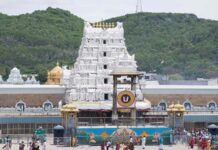A newly developed non-invasive method of recognising breath patterns can help rapid, one-step diagnosis and classification of various gastric disorders like dyspepsia, gastritis, and gastroesophageal reflux disease (GERD).
Currently, peptic ulcer disease is an important medical-social problem that has received special attention all over the world. Helicobacter pylori bacterial infection is considered to be the most significant risk factor for the development of this disease. Patients with peptic ulcer encircling both duodenal and gastric ulcer may remain asymptomatic or symptomatic, and due to undefined risk factors along with lack of specific symptoms at the early stages, the diagnosis is often delayed, leading to poor prognosis and high rates of recurrence of the diseases.
Conventional painful and invasive endoscopic procedures are not suitable for early detection of the acute onset and progression of peptic ulcer as well as various gastric complications. Moreover, the conventional endoscopic methodology is not suitable for general population-based screening and consequently, many common people with complex gastric phenotypes remain undiagnosed.
Prof. Manik Pradhan and his research team at S. N. Bose National Centre for Basic Sciences, Kolkata, under the Department of Science and Technology (DST), Government of India, used a pattern-recognition based clustering approach that can selectively distinguish the breath of peptic ulcer and other gastric conditions with that of healthy individuals.
The team used machine learning (ML) protocol to extract the correct information from the large complex breathomics data sets generated from exhaled breath analysis. In a paper published in the European Journal of mass spectroscopy, they implemented the clustering approach to recognize unique breath-pattens, breathograms, and “breathprints” signatures. This helped in a clear reflection of the specific gastric condition of an individual person along with three different risk zones for discrimination of early and late-stage gastric conditions and precise transition from one disease state to another state.














